With International Women’s Day on March 8 — yes, Mrs Captain made sure The Captain knew all about it and delivered her breakfast rum in bed — we thought it was about bloody time The Captain featured women in the fishing industry. Who doesn’t love a woman who can fish? The feisty fisherwomen in Part 1 of our Fish ‘n’ Chicks saga prove they’ve got what it takes to succeed — whether at the pointy end of a speargun, finessing the fly or cranking a reel.
You don’t need a PFD, you already have two inflatables.” (Clue: not life preservers.) “How are your twin Yammies doing?” (Clue: not outboards.) These are just two examples of what women in fishing have to put up with. Women in all industries have had to push boundaries and fight stereotypes just to be seen as equals to their male counterparts. Fishing is no different. Women are getting involved in the fishing biz as fast as salmon on the surge, and with so many young eyes on the sport, it’s important to cultivate a culture of inclusion.
For starters, women should be able to wear what they feel most comfortable in and not feel like (no offense NAFA) they’ll only make it by wearing bikinis and tight activewear. This isn’t about bloke bashing, and we’re giving a big shout out to the many supportive fishos who inspire and encourage their wives, daughters and female friends to get out there and grow the sport. These fisherwomen caught me up on everything from their favorite prey to what kind of boats they prefer — plus a few thoughts on how to kick that gender bias overboard.
EMI CAMPBELL
Location: Exmouth, WA
Occupation: Resort receptionist
Specialty: Spearfishing/diving/surfing
PB: 127 kg blue marlin
Boat: Yamaha Waverunner FX SHO jet ski, Haines Hunter V19 (owned with partner)
Contact: @emi_campbell
QUESTIONS FOR EMI
What inspired your spearfishing passion? “I’ve been an ocean lover my whole life and was always into diving and spearing. I grew up on the Kimberley coast fishing for barramundi with my dad taking me out on the boat as a toddler. My partner, Marcus, inspired me to get more into free diving and spearfishing, and has taught me most of what I know. Our first date was a camping trip to go spearing and surfing.”
Favourite boat? “The jet ski — we go everywhere and do everything on it from jigging for rubies out deep to cray dives inside the reef.”
How hard is being a woman in a predominantly male sport? “It’s so rewarding when you can go out with a boat full of boys and match them fish for fish. There are so many more women in the sport nowadays, it’s amazing to see them breaking records and having fun in the process.”
How often do you outfish the boys? “I like to think it’s a regular occurrence, but they’ll tell you otherwise! When I dive with the boys and get a good fish, the hype they give me is amazing.”
What’s your favourite prey? “I have a love-hate relationship with coronation trout because they’re a super-smart fish so they’re great to hunt, but also slightly infuriating. I love the way billfish fight and the excitement when you see them on a teaser off the back of the boat.”
Most memorable fishing trip? “Definitely a weekend away camping in the troopy. We dive, spear, surf and fish. It’s so nice to get out of town, off work and away from everyone and spend time doing things we love. We catch, prepare and cook all our own food.”
What’s a common stereotype you hear about women who fish? “Women can’t cast. A lot of men at work ask about fishing tours, but I can see they think a dress-wearing, blonde receptionist wouldn’t know anything. Generally, once I start talking about target species, they begin to take me seriously.”
Most cringeworthy comments from male fishos? “You obviously didn’t spear that fish, your hair isn’t wet. Your boyfriend catches the fish, you just pose with them.”
Your go-to spearfishing gear? “Reel Skipper, an American all-women’s fishing brand — super-stylish, but super-practical. But I still occasionally steal a fishing shirt or three from Marcus.”
Advice for women who want to spearfish? “Just go for it, but do a free-diving course before you push yourself. It’s so empowering to just jump in and see all the amazing things the sea has to offer. It becomes addictive, even if you just ease into it with snorkeling.”
What will improve the industry for future generations of women? “Women are underrepresented and misrepresented at the same time. When they are shown, it’s mostly for superficial reasons, not their talent. I admit I’m partial to a bikini, but that doesn’t mean I can’t keep up with the boys. But if we keep making waves, we will receive the recognition we deserve.”
EMI’S TOP FIVE TIPS
1. Be safe. It’s easy for things to go wrong down there.
2. Always dive with someone you trust who will look out for you.
3. Get a dive watch — they’re handy for tracking your depth and dive time.
4. Get a gun you can load yourself so you won’t miss fish waiting for someone to help you.
5. Enjoy yourself!
SARAYA D’ATH
Location: Mackay, Queensland
Occupation: Underground coal mining electrician
Specialty: Boating/dive master/sailing instructor
Boat: Cruise Craft 575 Outsider
PB: 21kg mahi mahi
Contact: @sarayadath
QUESTIONS FOR SARAYA
What inspired your passion for boating? “I’ve been sailing since I was three years old, with my parents, covering 30,000 nautical miles. We sailed across the Pacifc Ocean when I was 11, which took us 12 months. I was home (boat) schooled and it was the most amazing year of my life. When I was 15, I was selected from candidates from all around the world to participate in a Mike Horn Young Explorers expedition and lived on a 114ft sailing boat.”
Hardcore! The Captain heard you recently did a fullboat rebuild? “I bought Raising Havoc when I was a fourth-year apprentice in 2018. I could launch it and handle it independently. There was a little soft spot near the back of the boat that gradually got worse, so I thought I’d better take her into my mate, Mitch Quixley, who owns Moreton Bay Marine Services. He discovered the marine ply floor and transom were completely rotten and estimated a sixweek job for $10,000. Then he pulled up the floor and all five stringers and the ribs were rotten. All up — including fibreglass repairs, SeaDek, and fit out (re-wire and re-hose, new stereo, new speakers, squid lights, LED strip lighting under the gunwales) — she was four months in the workshop and cost $30,000.
At that price, The Captain assumes it’s your favourite boat? “I do love my 575 as a fishing boat. It’s perfect for a day cruise and scuba diving off the back. I’d like to get a bigger boat so we can do longer trips. Maybe a Riviera.”
How do you deal with being a woman in a predominately male sport? “I work in a male industry (there aren’t many females underground) so I’m used to the banter that goes along with females entering a male industry/sport. My theory is to give them as much banter as they give you. Show them your skills and prove all those female stereotypes inaccurate.”
Favourite fish? “I love spearing trout because I enjoy the thrill of finding one and the adrenaline you get when you pull the trigger. When I’m trolling behind the boat, I aim to catch mahi mahi because I enjoy the challenge of reeling them in.”
Favourite place to fish? “Cruising out to the Great Barrier Reef off Mackay, staying out a night or two and spearing on the reef.” Derogatory statements you’ve heard? “The man says: ‘I catch the fish, you cook the fish’. We’re at a point where the ladies should be able to bring home their catch and hubby should cook it — that’s what I get my boyfriend and dad to do. Tastes so much better when someone else cooks it.”
Advice for women who want to get into boating and fishing? “Go for it! If your husband/brother/dad/mother/sister/ girlfriend has a boat, ask them to show you the ropes. If you know nothing about it and don’t have a boat available, head down to the local tackle shop. There’ll always be a salty old seadog who will take great pleasure in showing a young female what she should buy depending on what waters are close. Try it, otherwise you’ll never know.”
How can women get better represented in the industry? “I hope we can prove we’re just as capable as males in fishing and boating. I get a few head turns when I’m on my own and reverse the Prado down the ramp, dismount the Cruise Craft and tie her up to the wharf while I park my car before jumping into the driver’s seat and taking off. I hope we’ll live in a world where that becomes the norm and females can be seen being independent and are accepted in currently male-dominated sports and industries.”
SARAYA’S TOP FIVE TIPS
1. Always take two eskies because you never know how many fish you’re going to catch. And you need a backup with cheese and crackers in case you don’t catch any fish.
2. Be prepared for any change in the weather.
3. Bring multiple lures and various types of bait, because your plans could change.
4. Bring face sunscreen. I use Dermalogica SPF — it doesn’t sting your eyes when you put your mask on in the water and fully protects from UV rays.
5. Pack the boat with various options for the day. My partner and I are indecisive so we always bring six rods with various reels (4000 to 14000), spearguns, wetsuits, scuba tanks, snorkeling gear — sometimes even SUPs.
ERIN MCGINTY
Location: Cairns, Queensland
Occupation: University operations manager.
Specialty: Spearfishing/marine science/maritime operations
Boat Owned: 6m Sea Pro
PB: 37.7kg/170cm Spanish mackerel (pending female spearfishing world record)
Contact: @erinmcginty
QUESTIONS FOR ERIN
How did you get into spearfishing? “I started scuba diving for crays on the south coast of WA with my dad and brother, but it wasn’t until I went to uni in Townsville to study marine science 10 years ago that I had my first crack at spearfishing.”
Is it difficult being a woman in a predominantly male sport? “It’s not too challenging these days. I dive with a lot of good male spearos and they all treat me as an equal, especially when you outfish them. If guys don’t see me as an equal, I simply don’t dive with them. Particular types of spearfishing can be mentally and physically draining and I appreciate male dive buddies who don’t go easy on me when I feel exhausted. It gets you in the mindset that you are capable of anything.”
How often do you outfish them? “Regularly, but spearfishing is a team sport, particularly blue water hunting. It would be unsafe to do it any other way. You rely on your dive buddies to watch you like a hawk from the surface while you dive, and assist you if anything goes wrong, or to fend off sharks, or help land a good fish. However, in past relationships I have seen guys be slightly intimidated when I outfished them.”
Favourite fish? “Dogtooth tuna — they’re undoubtedly one of the most challenging fish to land in the world. Once shot, they love to head for a deep cave on the reef and hang around with sharks in high-current areas. This plus their brute strength and mercilessness nature makes this fish capable of destroying your gear and day in a matter of seconds. I respect this fish the most. They will challenge you, frustrate you and make you work your ass off every time. It’s such a high reward when you land one — and they taste amazing as sashimi.”
Any run-ins with sharks? “When you combine burley, teasers and fish being shot in the water you’ll get sharks looking for an easy feed. But you get a good sense of how to read shark behaviour. Saying that, no-one can fully read sharks. I ‘ve had numerous close encounters with sharks bumping me trying to get a fish that I shot, and crazy feeding frenzies with up to 20 sharks trying to claim a fish I’d just speared. This is expected behaviour. But I’ve also seen a mate get hit right next to me by a large bull shark that sped straight up at him from the depths. We hadn’t even shot any fish or put berley in the water.” Most memorable trip? “Spearfishing at Ashmore Reef and camping for a week on Dauar Island in the Torres Strait. It was such a privilege. The island is only 30 minutes by boat from the Coral Sea. The turtles were hatching every night as fireflies turned on the ambience. I saw so many different fish species, including the rare lyretail trout and highfin coral trout in ridiculously clear water with visibility up to 60m.”
Most memorable trip? “Spearfishing at Ashmore Reef and camping for a week on Dauar Island in the Torres Strait. It was such a privilege. The island is only 30 minutes by boat from the Coral Sea. The turtles were hatching every night as fireflies turned on the ambience. I saw so many different fish species, including the rare lyretail trout and highfin coral trout in ridiculously clear water with visibility up to 60m.”
Thoughts on women who fish in bikinis? “I love the free feeling of being in your bikinis on the boat. I lived in the Torres Strait for four years. They have a conservative culture and being seen in your bikinis on the beach was seen as disrespectful. So as soon as the girls were in my boat and we departed the harbour, we’d all strip off into our bikinis because we’d felt restricted for so long.”
Top spots to fish/spearfish in Australia? “The more remote/untouched areas have been the most rewarding. Top spots for me include Scott Reef off Broome, Ashmore Reef and shipwrecks in the Torres Strait, and southern WA for deep-sea line fishing and coastal spearfishing. Cairns also produced some good fish for me last year.”
What stereotypes have you heard about women who fish? “That women will be a burden. Whether it’s spearing or line fishing, there’s a perception that if you bring a woman on the trip, the males will be doing everything for them. But more and more women have spent time in the sport, made the effort to learn how to do everything for themselves, own their own gear and boats, have gained maritime or free-diving qualifications and are entirely self-sufficient.”
Advice for women who want to get into spearfishing? “Learn how to do everything for yourself. The ability to be completely independent will ensure you never miss out on a trip because you won’t be seen as a burden — or you can simply organise your own trip. It gives you more confidence to achieve and progress.”
What will change the underrepresentation of women in fishing? “Supporting genuinely skilled women who are independent, competent and competitive will help. These women are good role models and their passion for the sport is infectious. When I started achieving goals and performing in spearfishing, I particularly appreciated messages of support from people in the sport who I looked up to. Getting supported by Aimrite International also gave me more confidence to continue achieving.”
ERIN’S TOP FIVE TIPS
1. Find a gun that suits you. It’s important you can load the gun yourself, but that it still has enough power for the spearing you are doing.
2. Put in the time to search for ground. There are always spots on Navionics that will look good, but chances are everyone else has had the same idea. It’s the less obvious spots that produce.
3. Find dive buddies that dive as a team, and who practise diving safely.
4. Always carry spare gear such as a rigging kit, mask/snorkel and shafts, so damaged or lost gear won’t ruin your day. I also carry haemorrhage bandages and a tourniquet (and show my dive buddies how to use it) in the off-chance someone is bitten by a shark.
5. Ladies — wear a lycra hoodie underneath your wetsuit hoodie to avoid those guaranteed dreadlocks. Thank me later.
JESSIE CRIPPS
Location: Wherever the anchor drops — Jessie and her partner live on a catamaran and are currently making their way down the east coast. When cyclone season finishes, it’s back north and on to Indonesia and the Solomon Islands.
Occupation: Whatever cashes Jessie up for her next adventure.
Specialty: Spearfishing/content creation.
PB: 42kg yellowfin tuna (in Central America)
Contact: @jessie_cripps_sv_popao
www.underwaterallyproductions.com
QUESTIONS FOR JESSIE
How did you get into spearfishing? “I was introduced to scuba diving around 18 and that progressed into spearfishing when I dusted off the cobwebs from Dad’s gun and recommissioned it. Shortly after that, I met my partner, Michael Takach, who is a mad keen spearo.”
What boat do you own? “We own two. One is a Peter Snell-designed Easy 37ft catamaran, our mothership. The other is our Highfield Classic 340 RIB. It’s our adventure workhorse, taking us anywhere from shallow mangroves for crabbing to offshore FADs for spearfishing. We’ve been caught out in 40 knots of wind and a 2m swell and she gets us home every time.”
Favourite boat ever owned? “It depends on the adventure. Spearfishing from our old Haines V17L offshore was always a pleasure. Launching our Quintrex 350 Dart for after-work squidding missions and night cray dives was much simpler and easier than launching the Haines. But my favourite so far is our catamaran/Highfield set-up.”
Most memorable fish? “An 18kg dogtooth tuna shot in Tonga a few years back. After living in the Pacific for two years, chasing these fish and having a bunch of heartbreak stories, it was bloody great to finally land one.”
How difficult is being a woman in a predominantly male sport? “I haven’t found it too difficult. It can be hard to be taken seriously at times. A lot of our experiences are so unbelievable, the average person thinks I’m just telling stories. Luckily, it’s always backed up with video evidence.”
How often do you outfish the boys? “Michael’s got 10 years’ experience on me so not often, but it does happen — and I make sure he knows. I’m extremely selective. I tend to pass on a lot of fish I might’ve shot five years ago and always hunt with my stomach in mind.”
Favourite fish to spear? “Dogtooth tuna, hands down. They’re delicious, live on the reef and are one of the hardest fish to land.”
Any run-ins with sharks? “In Australia, if you haven’t found the sharks, you haven’t found the fish. They tend to be an indication of a healthy fishery. I haven’t had too many close calls, but the scariest was a big angry bronze whaler that ignored my fighting kingfish and charged straight for me. A big hand slap on the surface was enough to scare it away. After a while, you learn to read their behaviour and pick your fights. A relaxed shark, slowly cruising around on the edge of visibility and keeping to itself is generally not a bother. But a shark high in the water column, pectoral fins pointed down, back arched, constantly swimming up to you, often means trouble.
Favourite fishing adventure? “Anything off the grid — the bigger the adventure, the bigger the reward. Chasing fish in the Pacific, living with locals, sharing and cooking our catch with the villages and learning about traditional ways of life are among my most memorable experiences.”
What derogatory comments have you heard? “Spearfishing is a pretty level playing field. I’ve never felt overly stereotyped — no more than the everyday casual sexism that exists in Australia.”
Have you heard any cringeworthy comments? “So many, especially at boat ramps. Things like ‘not bad for a girl’, or ‘you spear, as well?’ The worst was one time I questioned a safety decision in a diving comp and the man responded ‘Must be that time of month’. He was recently kicked out of a spearfishing club, so no surprises there. With my crew, there are no issues at all.”
What is your go-to spear gear? “Full disclosure: I’m sponsored by Riffe International, so I’m a little biased. They always listen to our feedback so it’s like getting custom-made gear. I have a 130 Euro speargun with double flopper, X DiveR carbon fins and a Stable snorkel. Even if I wasn’t sponsored, I wouldn’t change any of my current gear.”
Advice for women wanting to get into spearfishing? “Get out there and give it a go, if you’re uncomfortable with who you’re diving with, find better dive buddies. Starting out is always the hardest part, but if you stick with it you’ll find your tribe. Check out the ladies’ spearfishing blog on my website for tips on gun set-ups, rubber lengths and tricks of the trade.”
What will give women better representation in the fishing industry? “I’ve watched this sport explode over the past five years on Instagram. It’s great to see so many women taking up the sport and just seeing other ladies doing it is enough encouragement for the upcoming generation.”
JESSIE’S TOP FIVE TIPS
1. Get out there and give it a go, there is no substitute for time in the water.
2. Do a free-diving/CPR course, you’ll be a safer diver and a better dive buddy.
3. Learn boating etiquette — help pull the anchor, offer to pay your share of fuel and share the driving.
4. Ask questions. Try to find a mentor or join a spearfishing club.
5. Don’t take it too seriously. If you think you’re going to lose your fish, get your buddy to second-shoot it. There’s no room for egos and we’re here to sustainably catch fish, not maim them.
KRISTINA PLACKO
Location: Central Otago, NZ
Occupation: Construction project manager/fishing guide (summer)
Specialty: Trout, spin and fly fishing
PB: Giant trevally in FNQ
Contact: @straysouthnz www.straysouthnz.com
QUESTIONS FOR KRISTINA
How did you get into fly fishing? “I was introduced to fly fishing through my fishing friends. I love the constant challenges it brings —there’s being good at fly casting and there’s being good at fly fishing. When those two worlds collide, it’s next level!”
Is it difficult being a woman in a predominantly male sport? “Not as difficult as it might have been for those women who paved the way for our generation. Generally, the guys are supportive of having more women in fishing. And why wouldn’t they be? We challenge them and look good doing it.”
How often do you outfish the boys? “Not often enough because I usually only get a chance to fish with them once. If I catch more fish, they always seem to be too busy to go fishing with me again. Go figure.”
Favourite species on the fly? “I love sight fishing for trout! The close-proximity fishing, sneaking up on this spotted species, getting in position and then presenting a lure or fly to them is like embarking on a mission of epic proportions. When they refuse my offering and teach me the lesson, that just keeps me coming back for more — the old treat ‘em mean, keep ‘em keen. And the natural beauty of the places that trout fishing takes me never ceases to amaze.”
Favourite fly fishing adventure? “A backcountry river in the South Island. Thinking back, it was one of the hardest things I’ve ever done mentally and physically. I’m thankful for the experience because I proved to myself that anything is possible, and your passions can take you wherever you want to go.”
Bucket-list species? “Tarpon in Florida on fly!”
What are your top five Kiwi fly spots? “Southland, Central Otago and the Mackenzie Basin. There are more than five waterways, that’s for sure!”
What is your go-to guiding gear? “Layers. Thermal compression leggings are great for under waders and also wet wading. They give protection from the prickly plants and grasses, and warmth during long periods wading. Breathable long-sleeve shirts and thermal tops for sun and bug protection, and I love a printed buff for my neck. Hats are a must for sight fishing, particularly to help block the glare — and polarised sunglasses, always.
Advice for women wanting to get into fly fishing? “Get some lessons from a reputable fly caster or instructor and then practise what you’ve been taught. Getting the fly to where it needs to be is half the trick — everything after that is fishing. Being a proficient caster takes out so much frustration and will make your fly-fishing time a lot more fun and relaxed.
What will increase female representation in fishing? Initiatives like the Women in Recreational Fishing network reach the masses and introduce large numbers of girls, women and families to fishing and outdoors lifestyle at grassroots level. Awesome mags like this one do us the epic favour of showcasing like-minded and amazing women in the fishing world— bringing us all together and expanding our minds to the possibilities the fishing industry and sport have to offer.”
KRISTINA’S TOP FIVE TIPS
1. Flies, lines, approach.
2. Visit the Central Otago region between December and March for peak trout fishing — a 6# weight fly rod, floating trout line and a mix of nymphs and dry flies.
3. The South Island is well known for its dry fly fishing, but the weather can be unsettled and the fish see some pressure as the season gets on, so mixing it up may be required.
4. Practise your casting — fly or spin and short distances up to 35ft. The water is typically super clear and the trout see everything, so you don’t get many chances to make the perfect cast.
5. Practise your casting on the grass, not on water, you don’t need the distraction. And practise in the wind. Early season, the nor-wester blows up and you’ve got to be prepared.
APRIL VOKEY
Locations: British Columbia, Canada and NSW
Occupation: Podcaster/writer/entrepreneur
Specialty: All things fly fishing — best known as a steelhead angler wielding a Spey rod
Boat: 20ft Wooldridge Alaskan
PB: Billfish, sturgeon, 50lb chinook salmon.
Contact: @aprilvokey www.anchoredoutdoors.com
QUESTIONS FOR APRIL
How did you get into fly fishing? “My dad and I lake fished and trolled for worms when I was a kid, but it wasn’t until I had my driver’s licence that the obsession really started.”
How difficult is being a woman in a predominantly male sport? “I’ve taken some serious hits in my career because I’m a woman, but I’ve also had it work to my benefit. As far as the level of difficulty, when it comes to fishing, fish don’t see gender.”
How often do you outfish the boys? “As often as they outfish me.”
What’s your favourite prey? “Any fish that’s out for blood. I’m really into sightfishing for aggressive predatory fish.”
Favourite fishing adventure? “Bolivia, Mongolia, New Zealand — anywhere that makes me feel like I’m hunting in water.”
What are some of the most common stereotypes you’ve heard about women who fish? “If you wear makeup, you can’t be the real deal, if you’re hot, you’re overrated, every talented female angler was taught by a man.”
What is your go-to fishing fashion? “Anything waterproof. I’d wear duct tape if it meant I could use the bathroom without ripping any body hair out.” “Funny” comments male fishos have said to you? “’Get off the river and make me a sandwich.’ I offered him a knuckle sandwich. True story.”
Advice for women who want to get into fishing? “Find another woman as intrigued as you are, then simply go out and do it. Know that you will never know it all, so you may as well learn to laugh at yourself and others along the way.
APRIL’S TOP FIVE TIPS
1. Leave your fly/lure in the water.
2. Look in the water before casting or stepping. Sometimes the fish is right beside you.
3. Pinch your barb.
4. Don’t wade so deep.
5. Don’t leave fish to find fish.
Words by Alli Ficarra

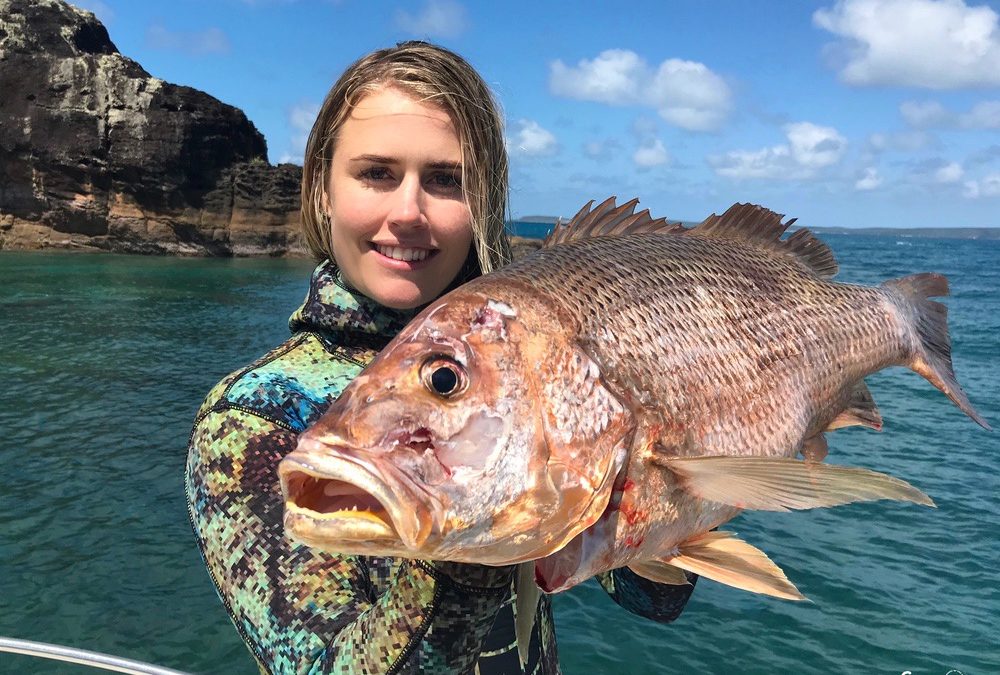

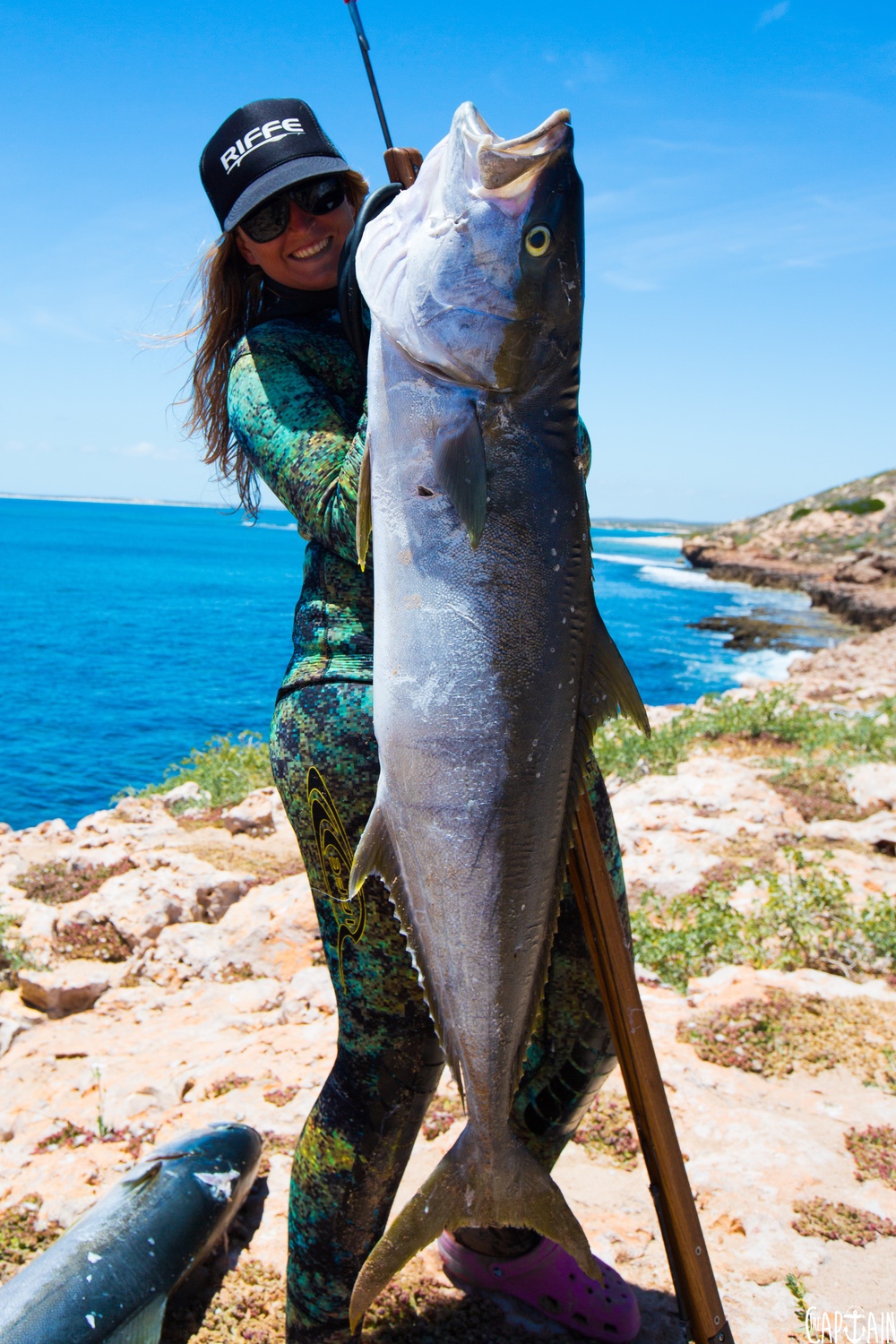



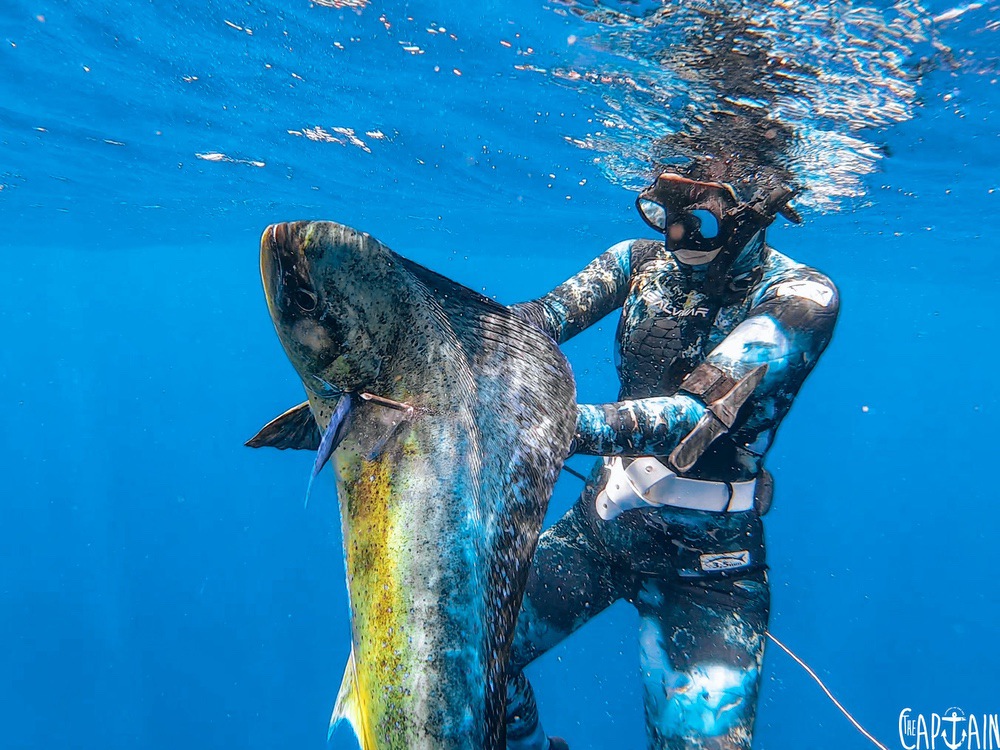
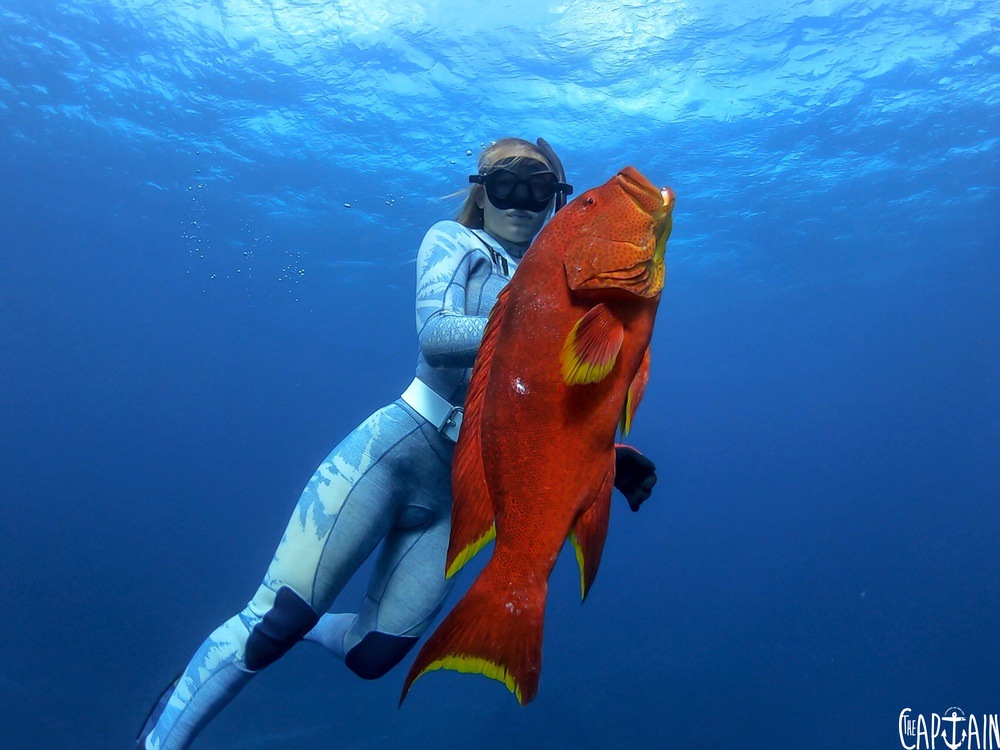


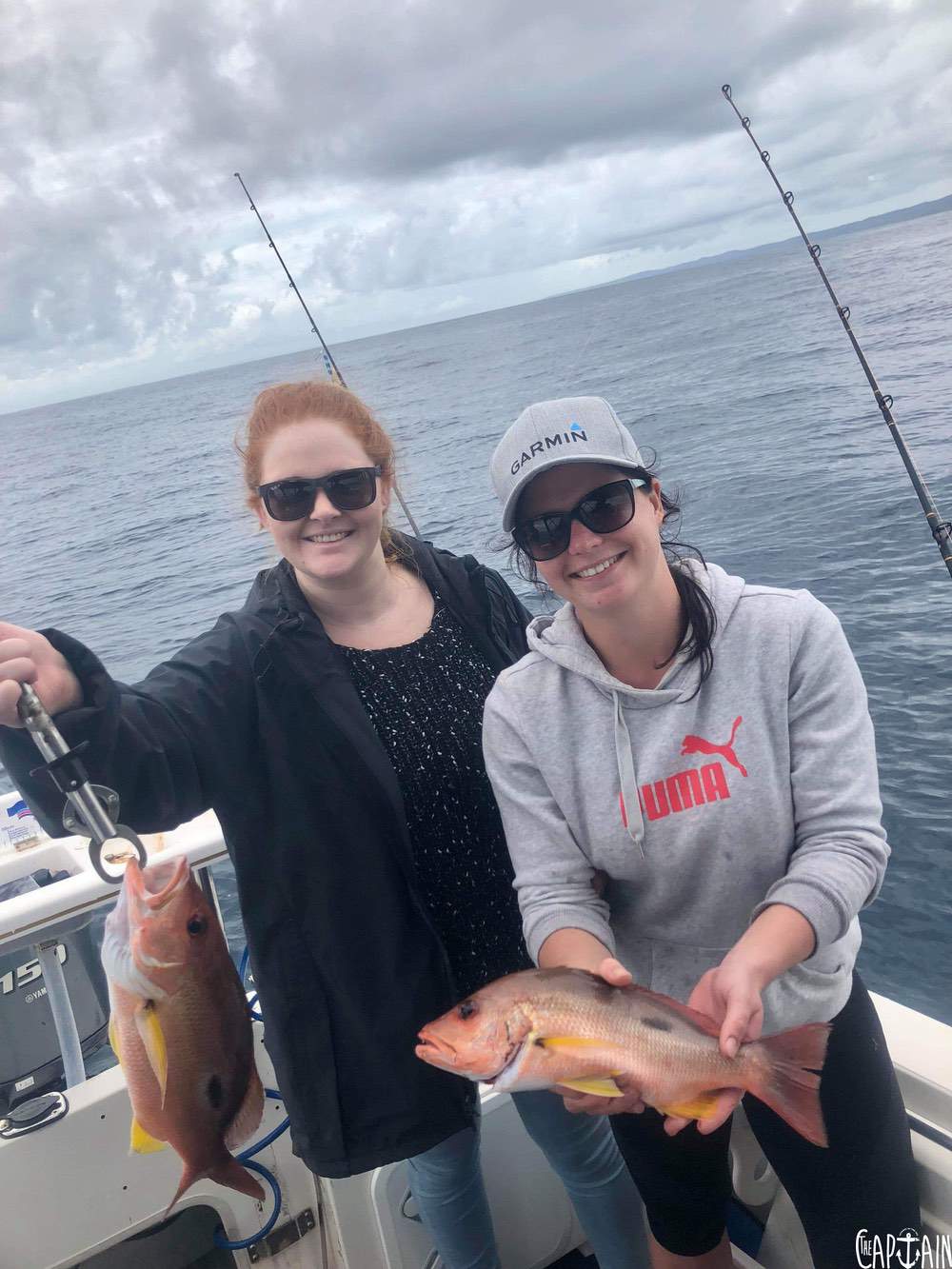
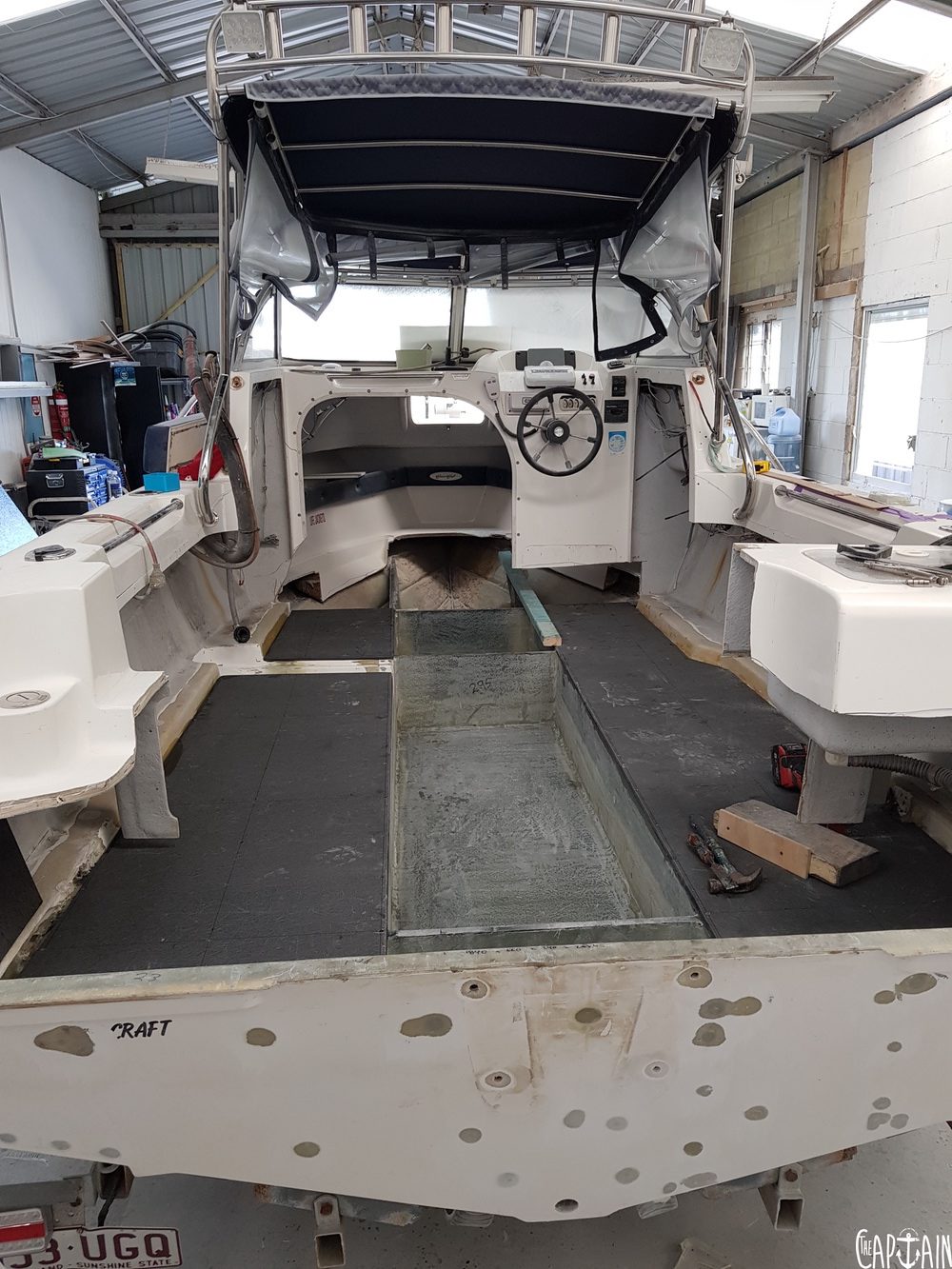
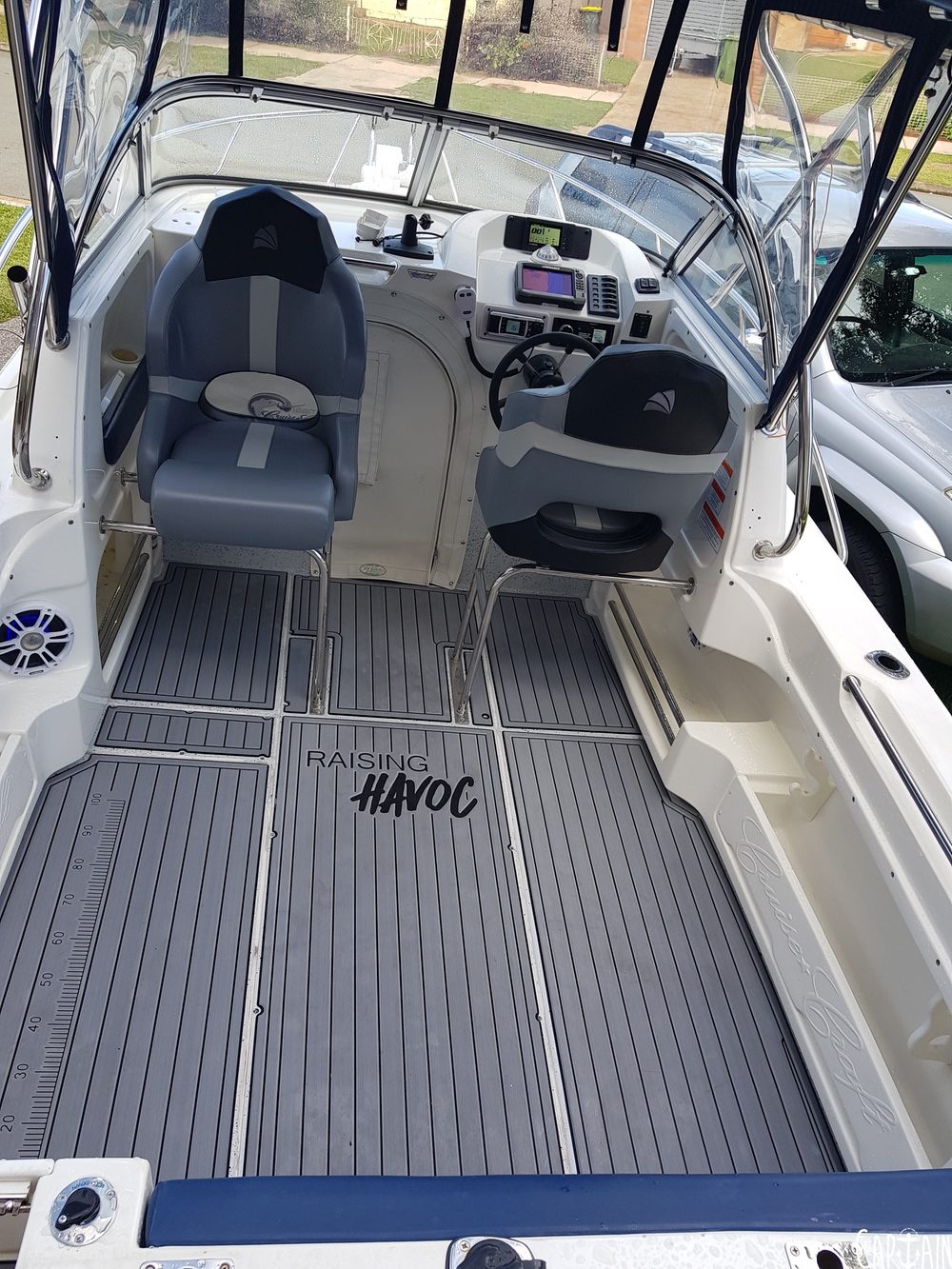

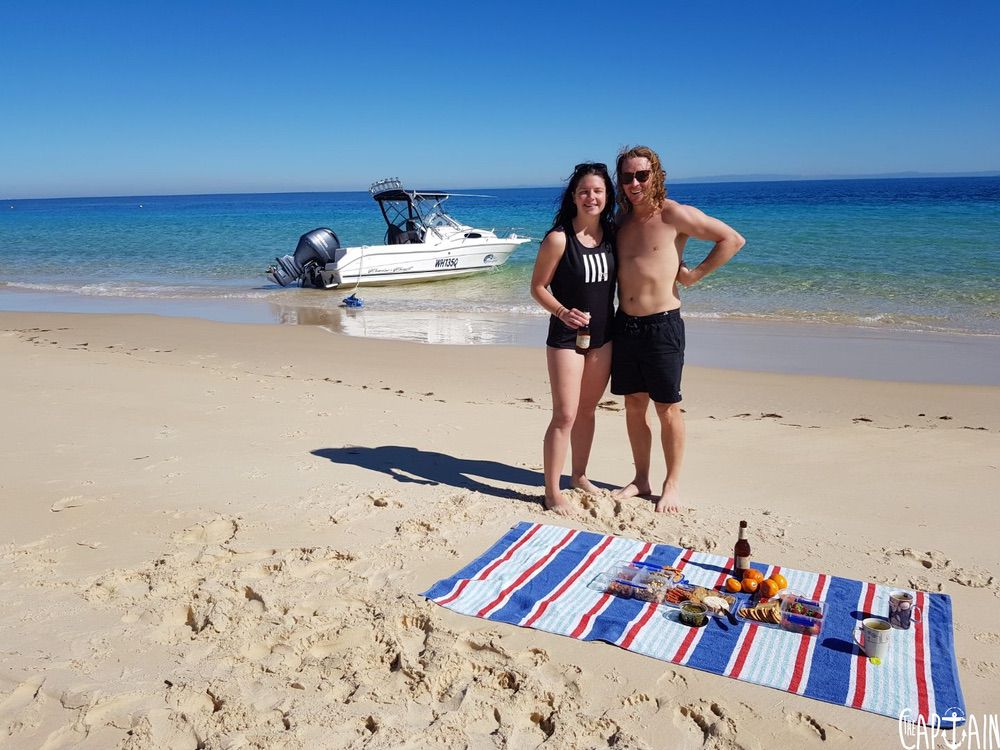
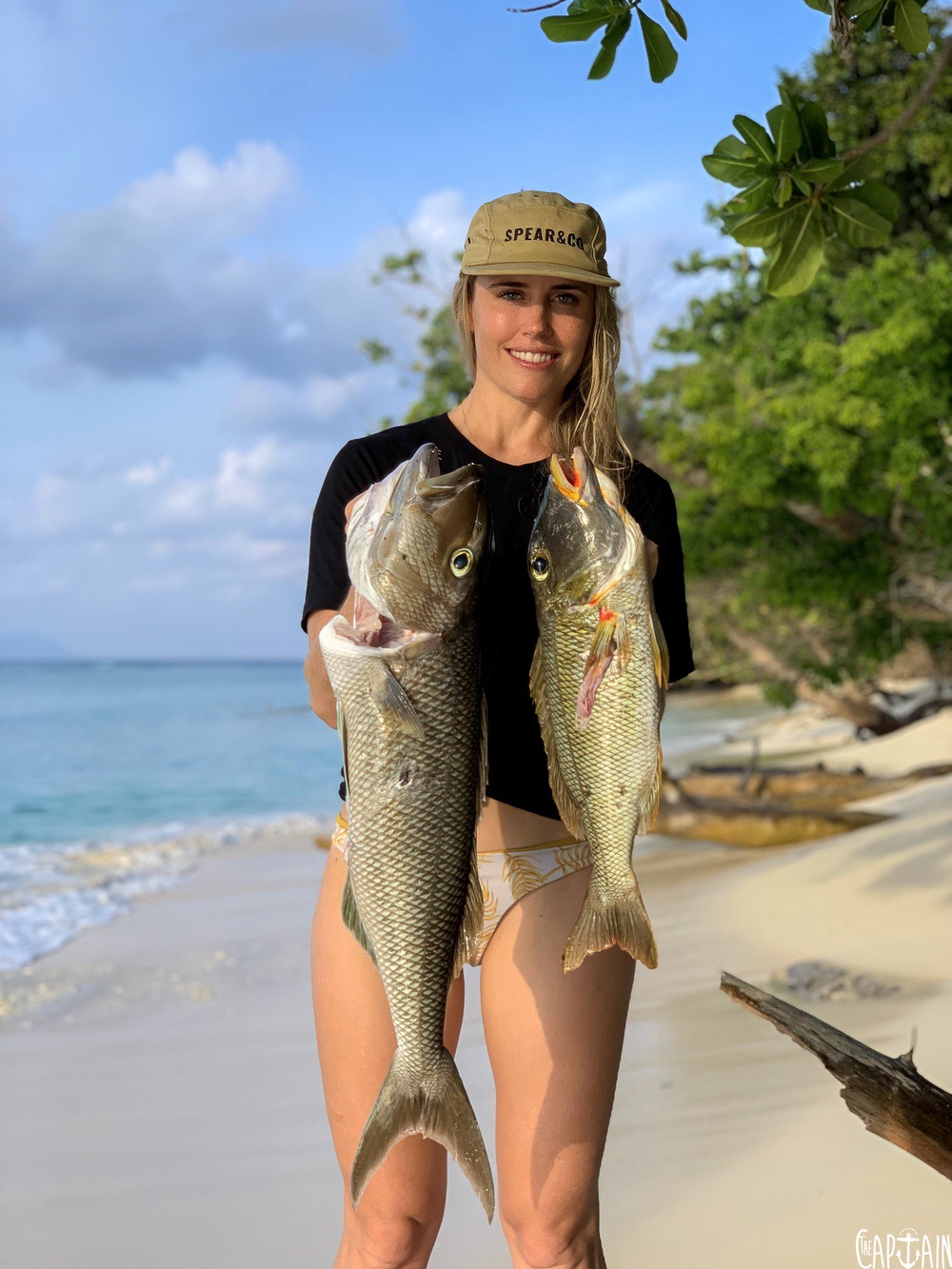
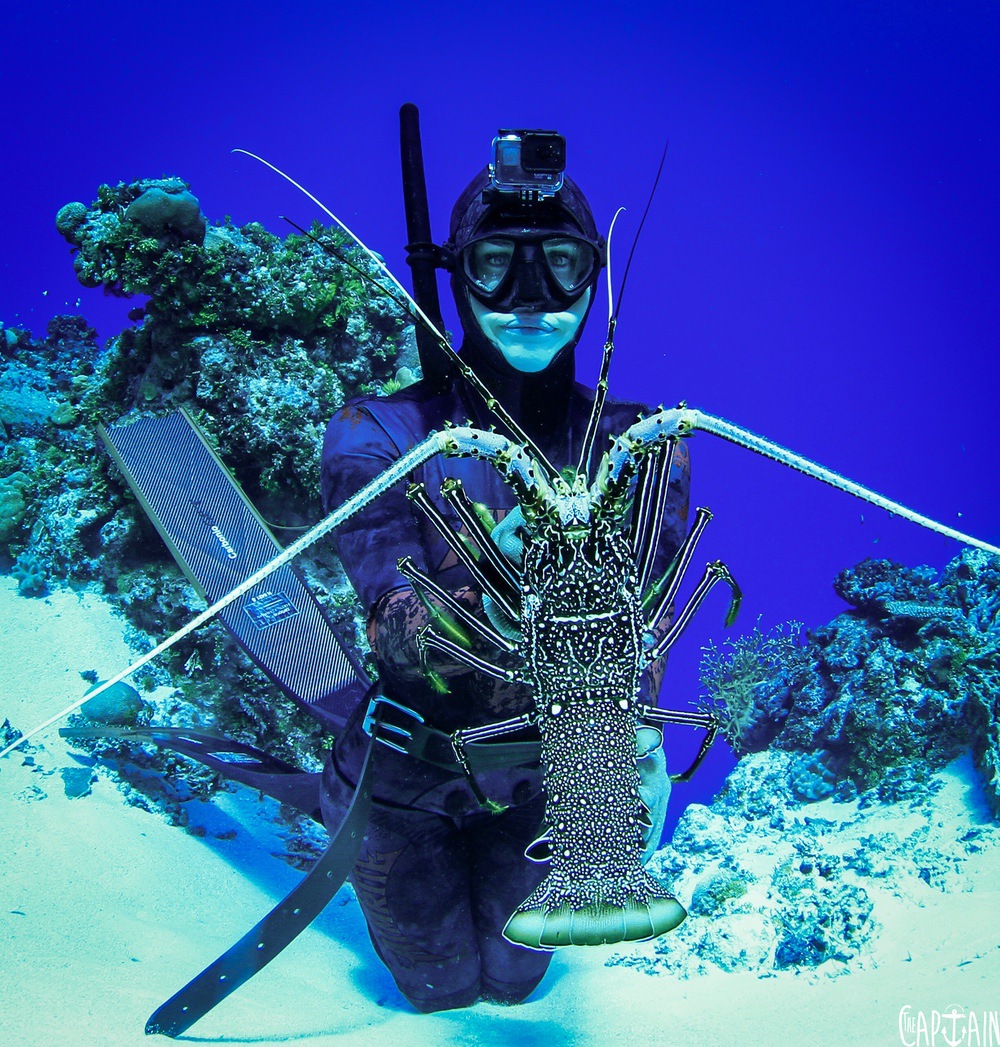
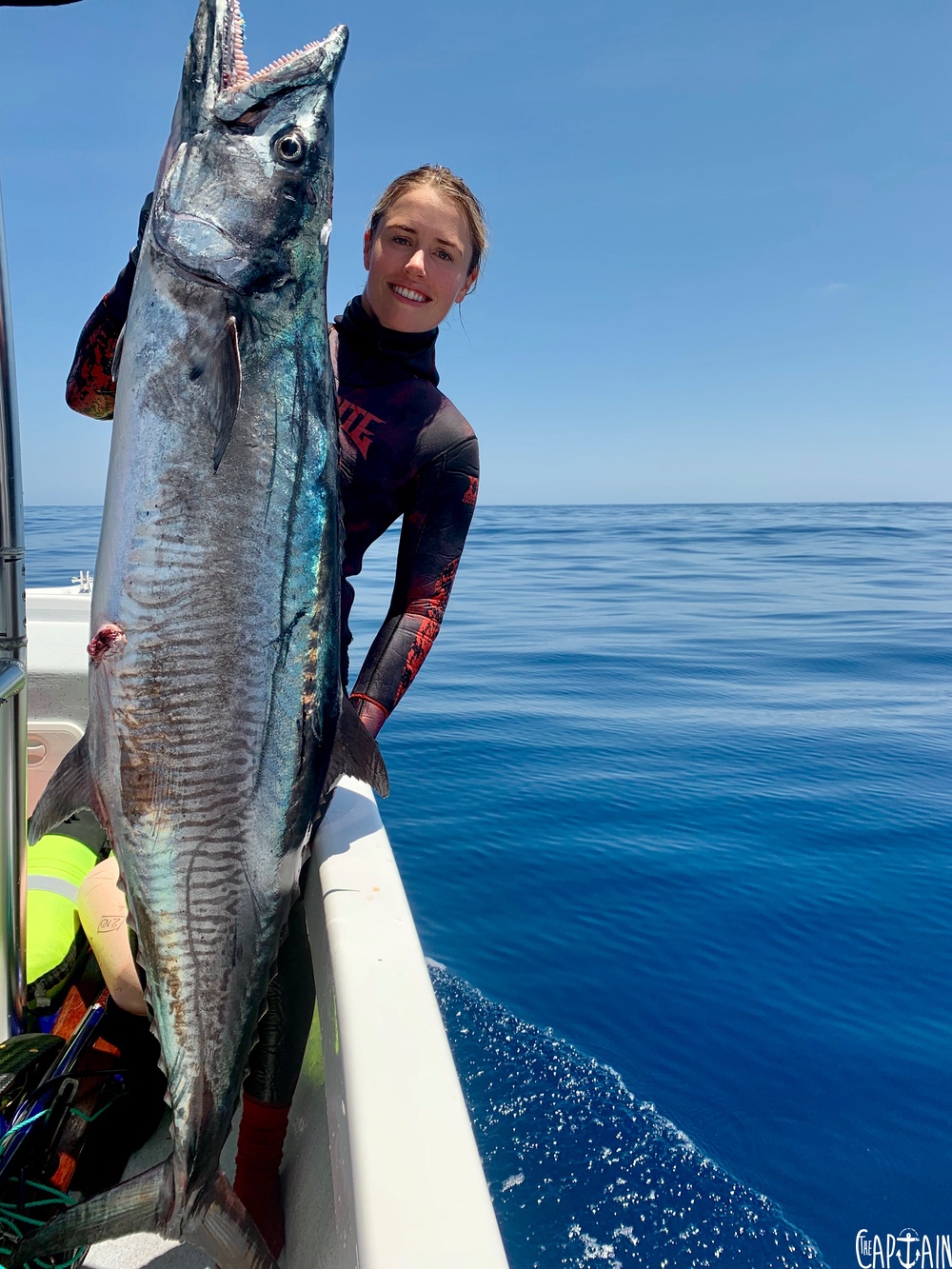
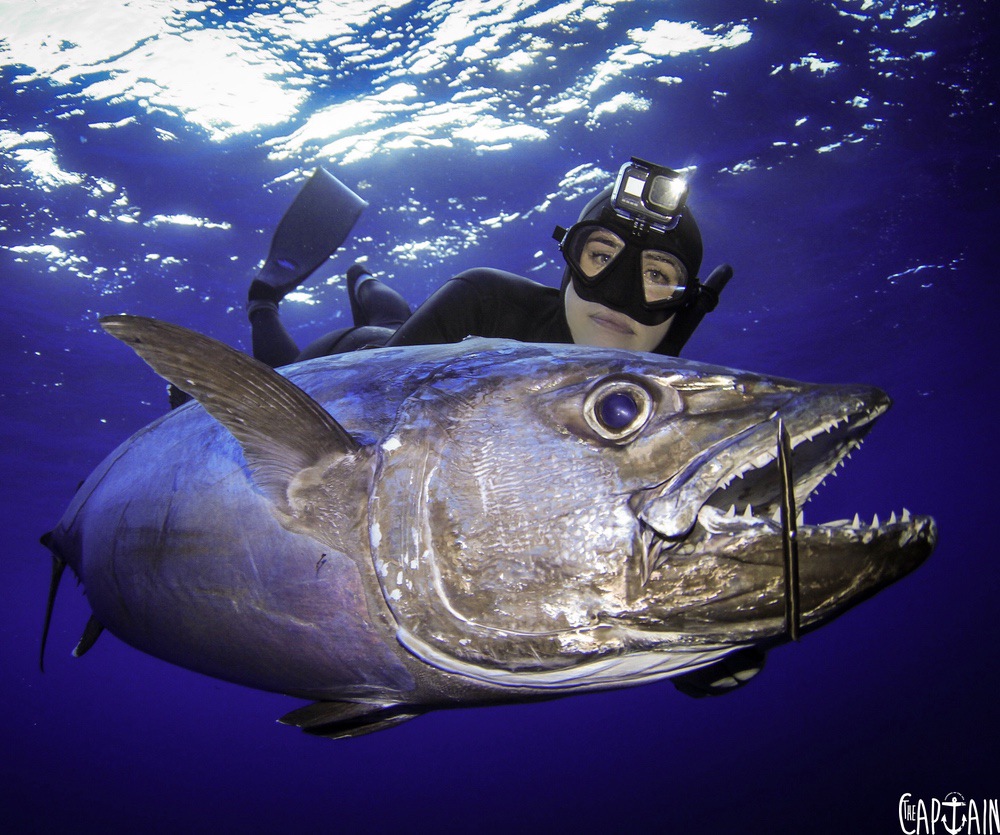
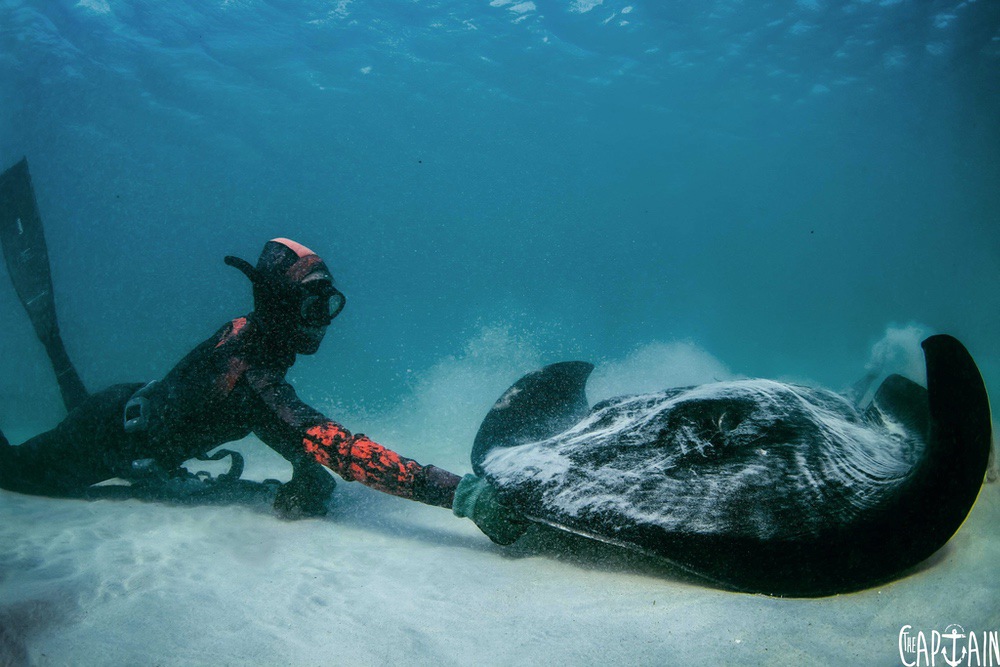
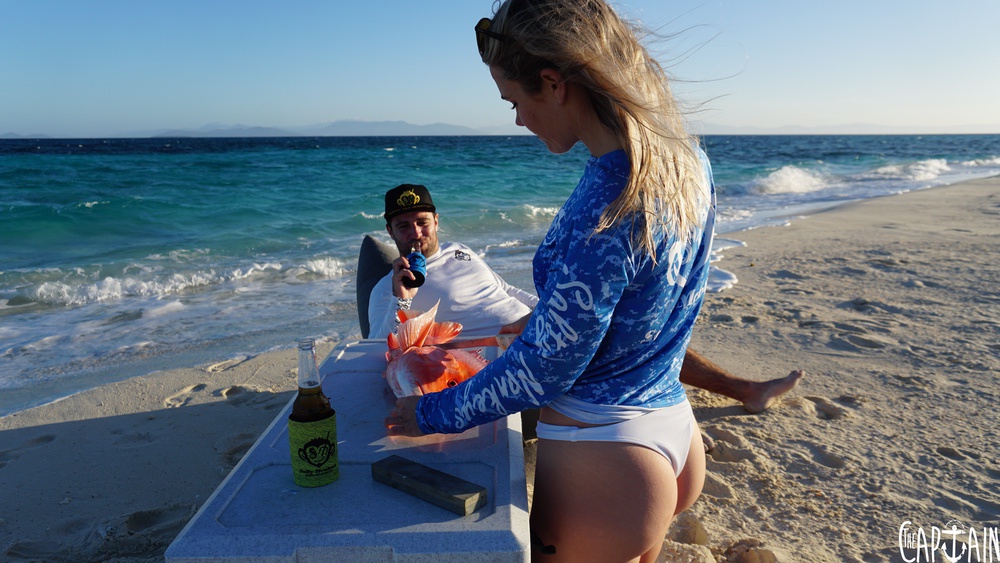
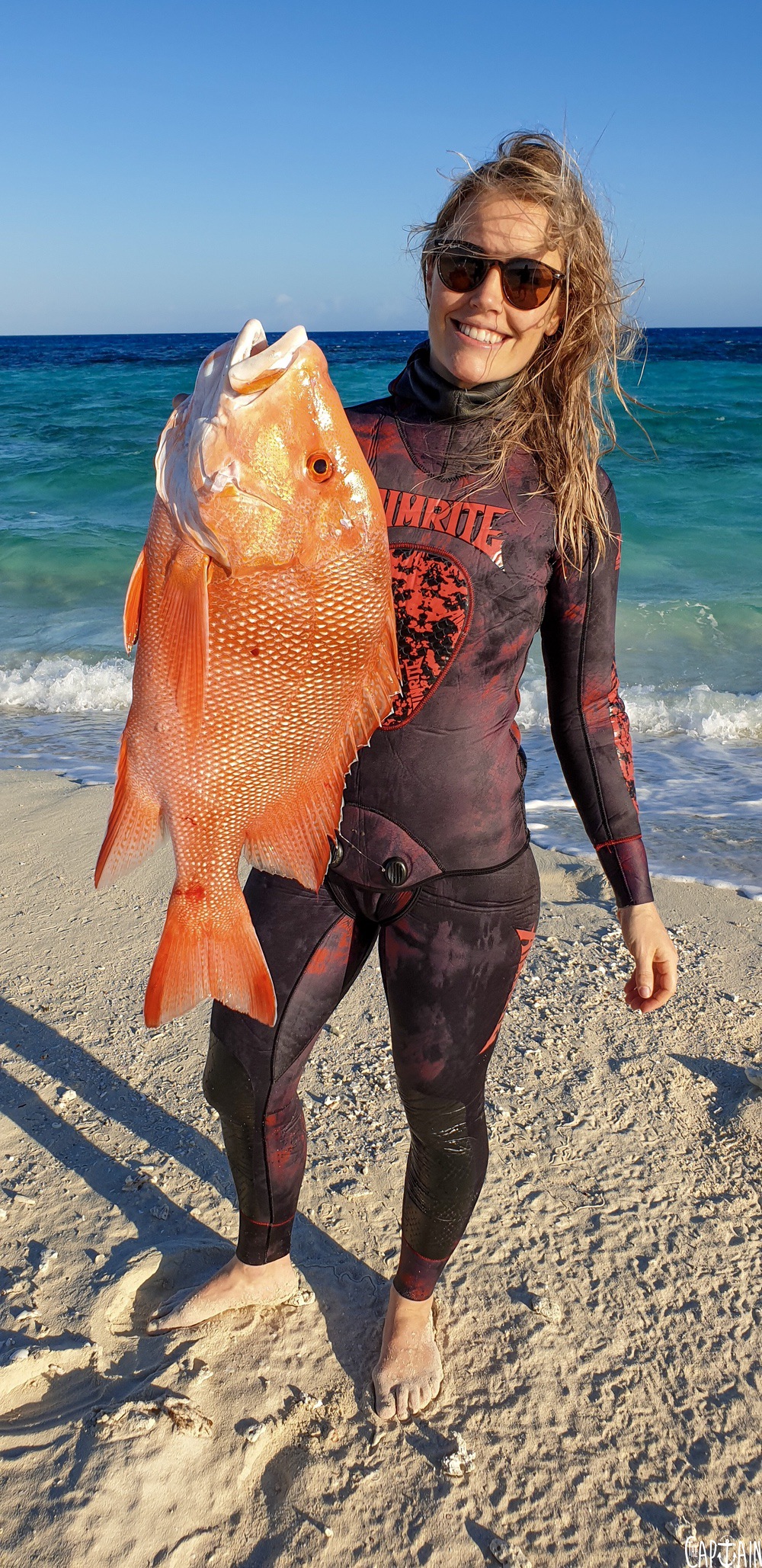
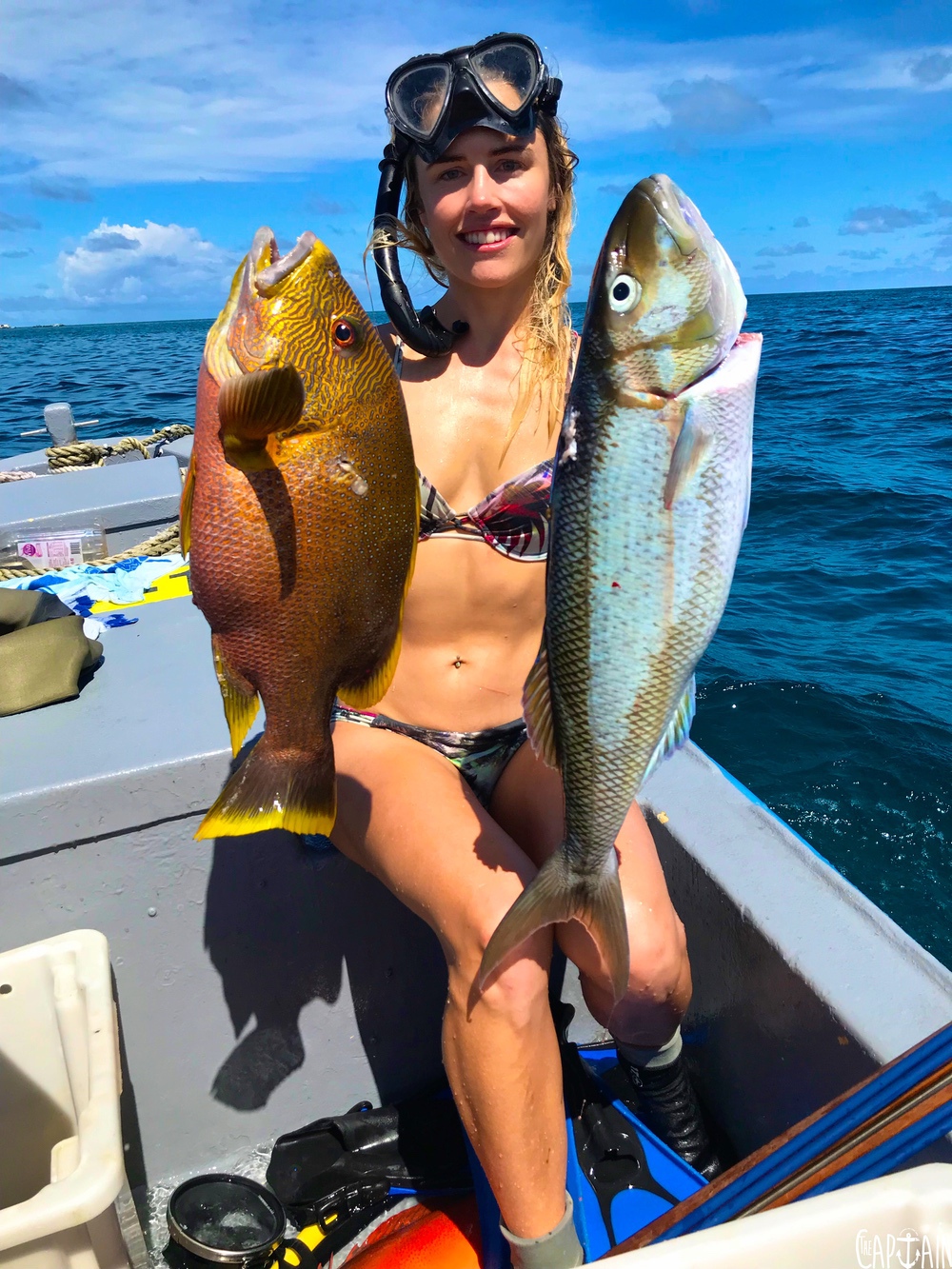

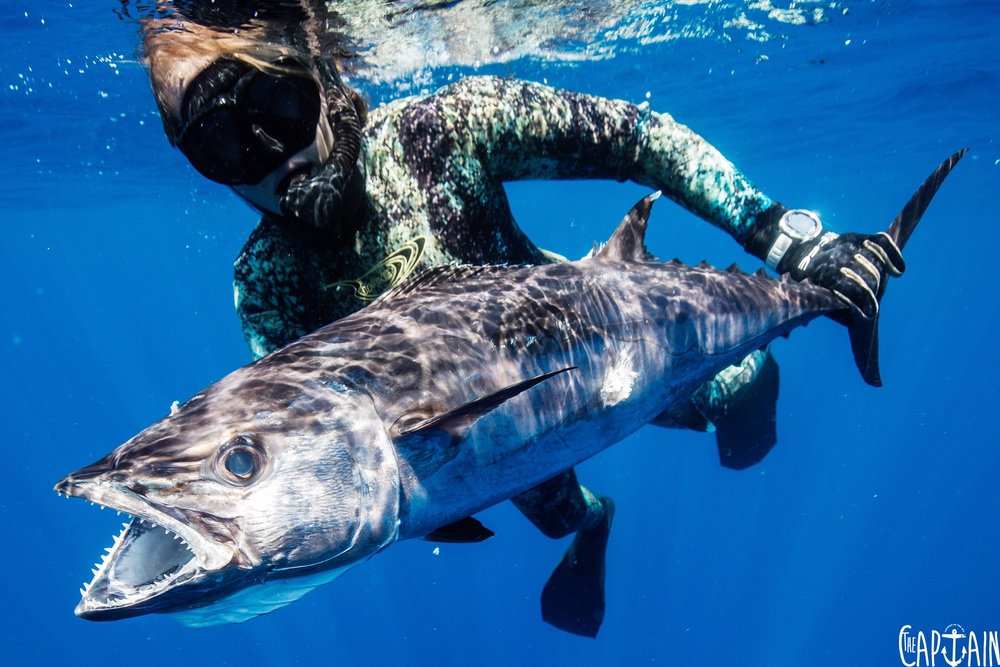
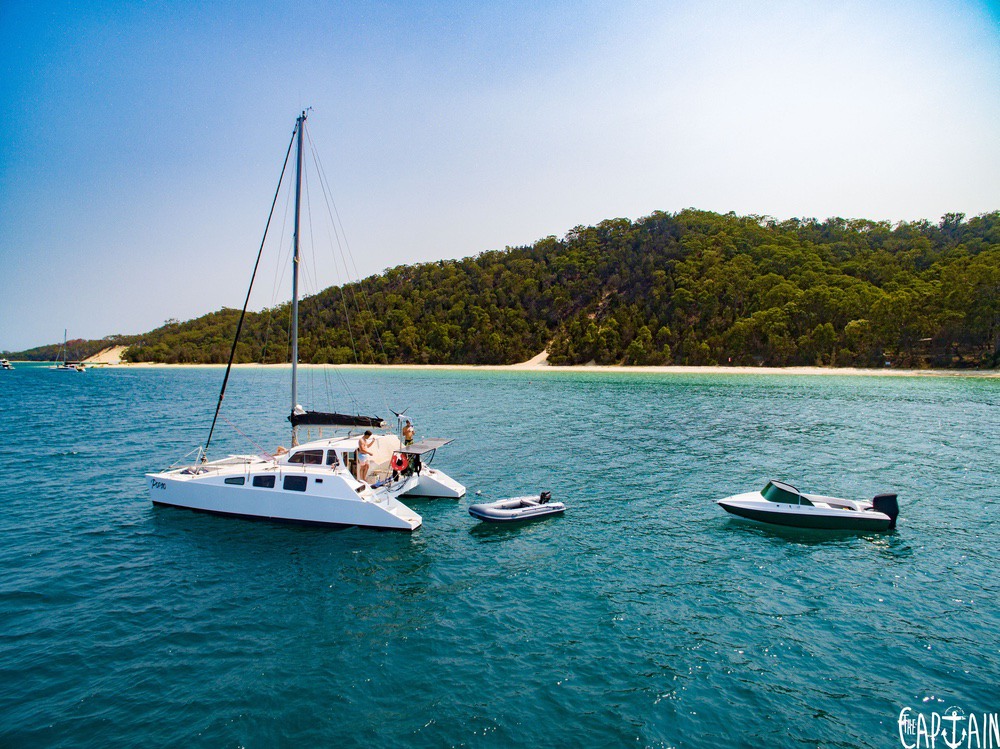


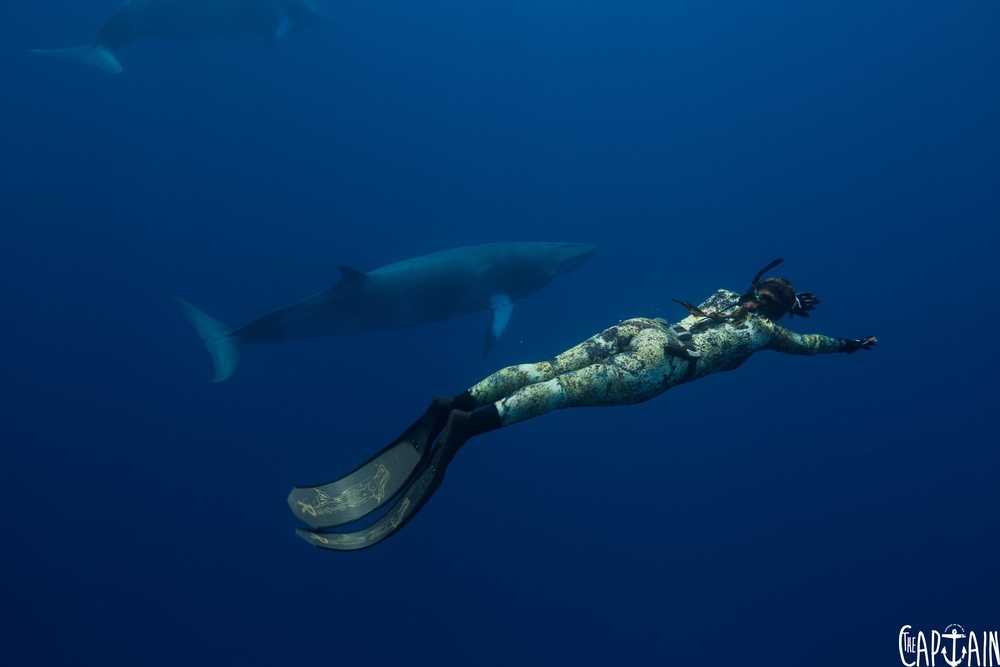

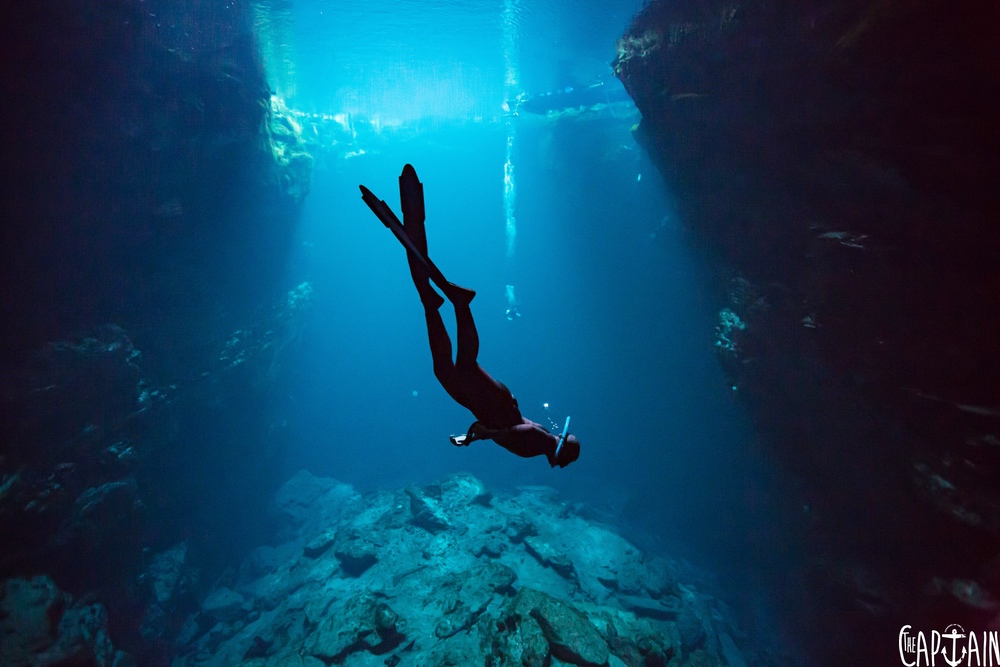
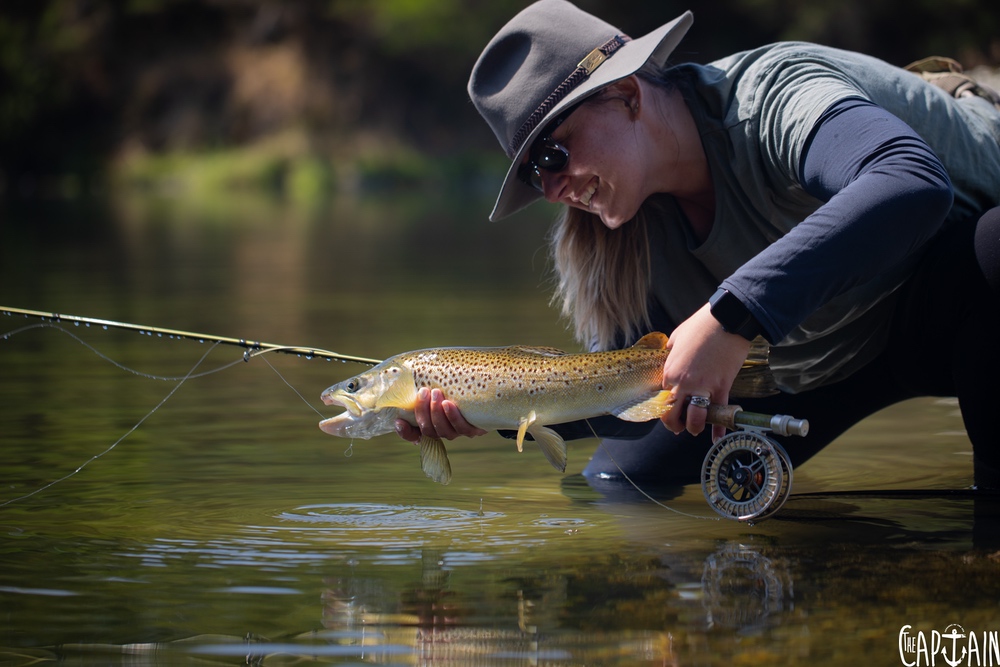

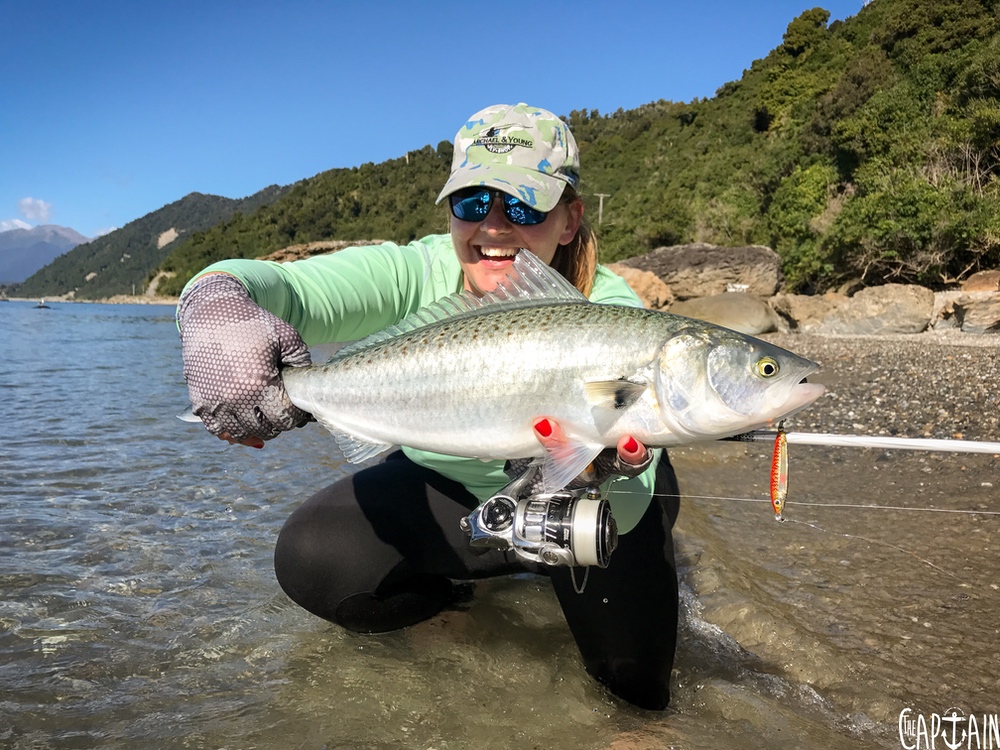
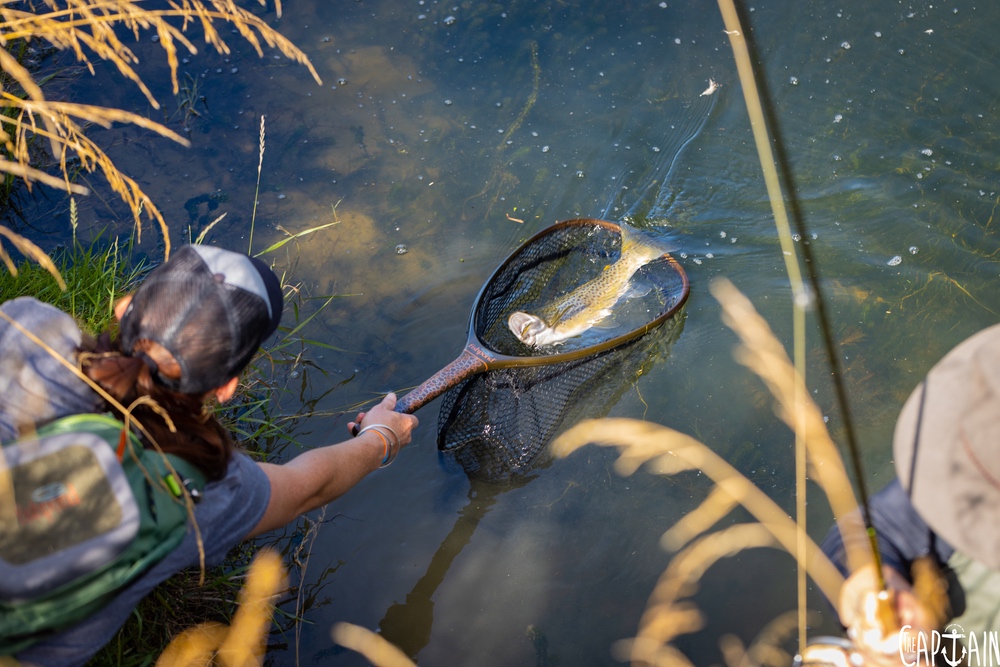

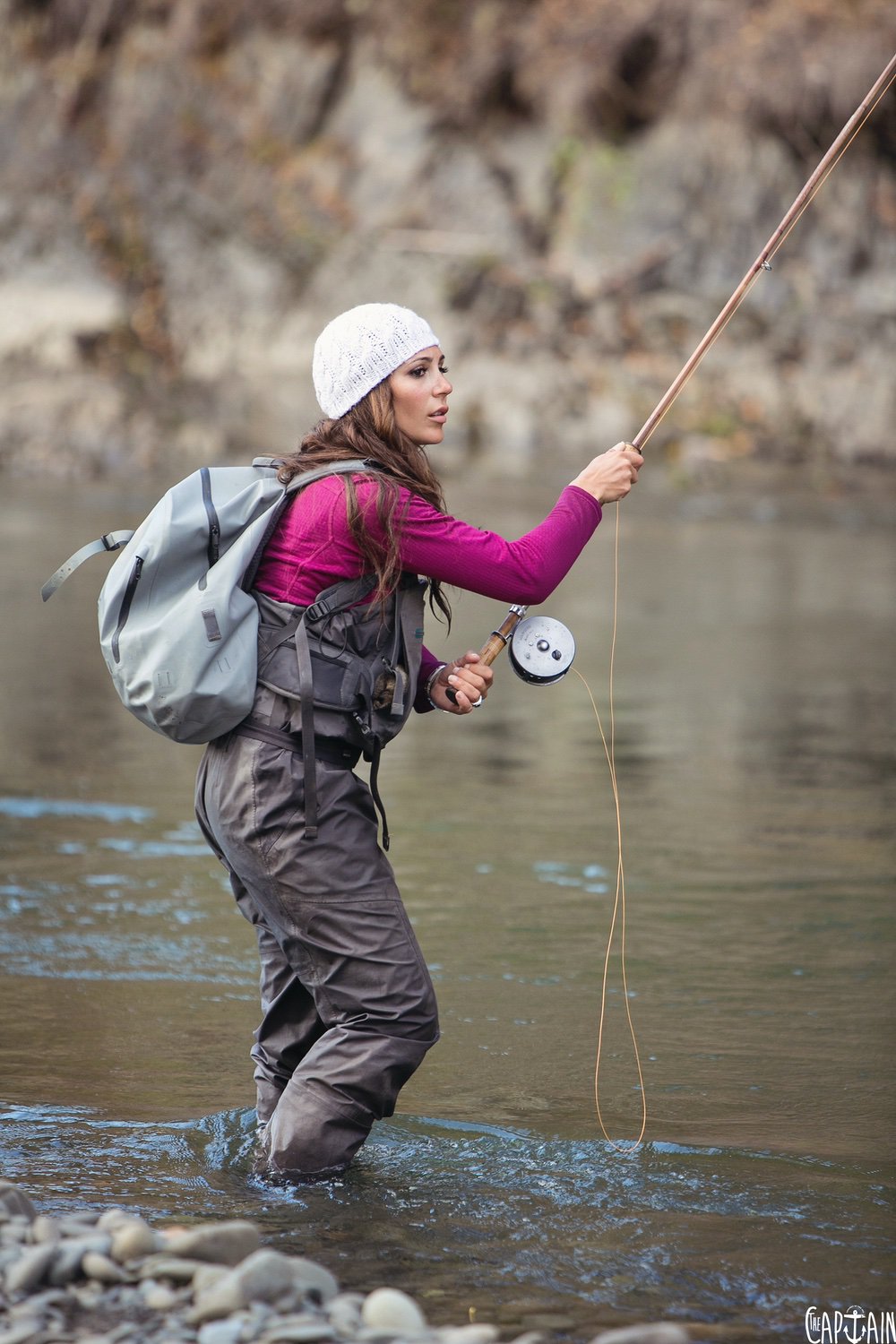

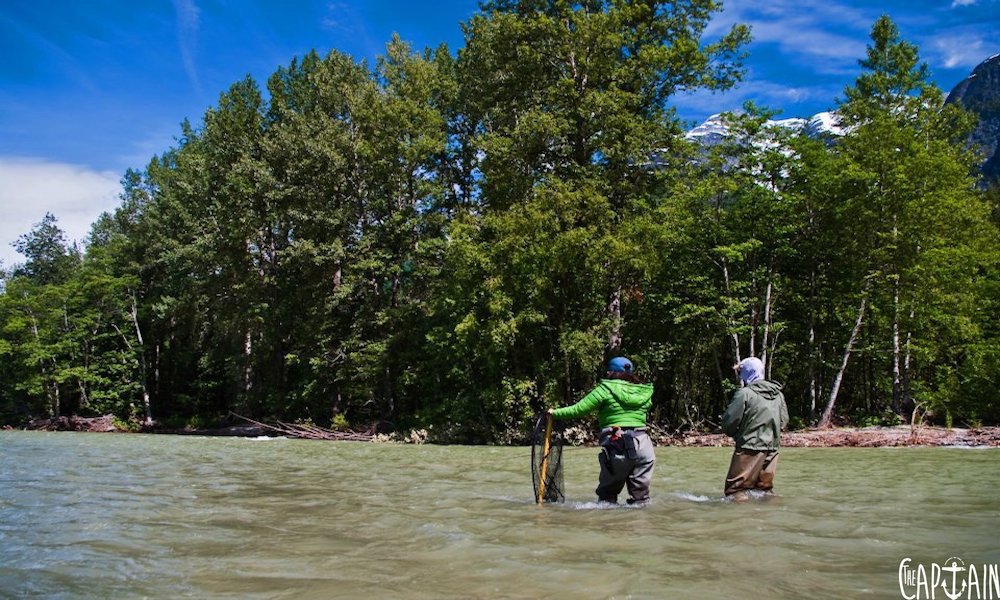
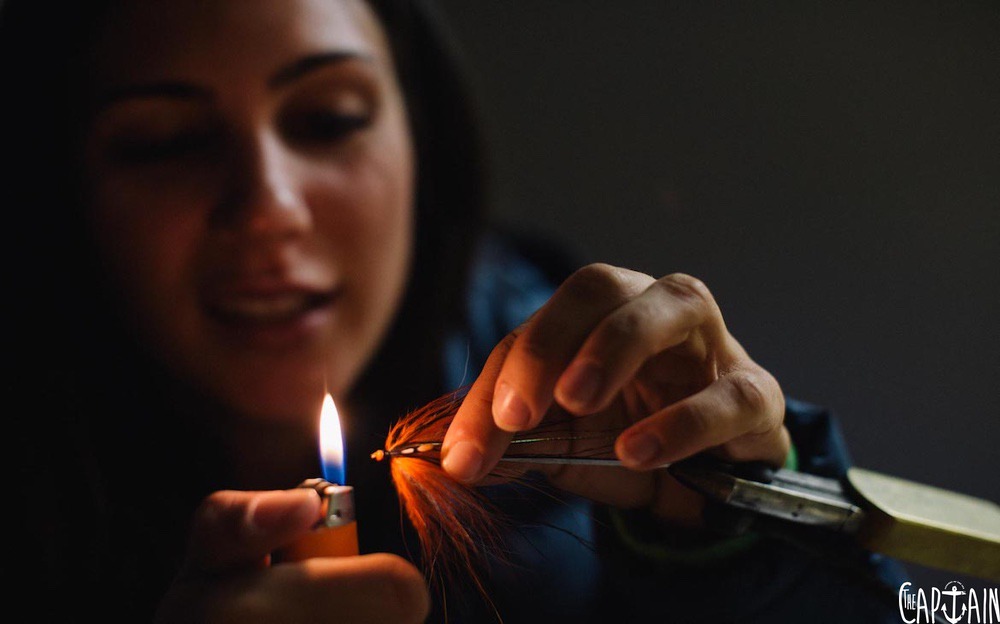
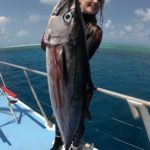
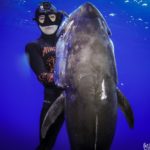
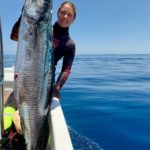
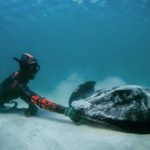
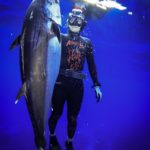
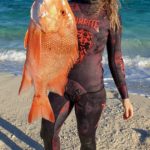
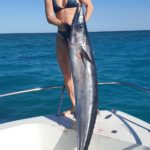
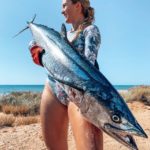
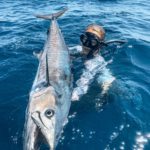
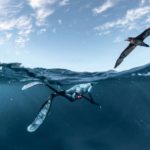
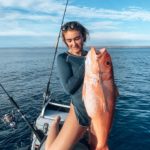

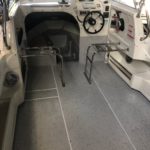

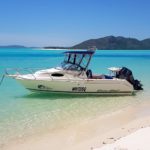



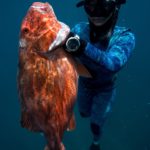

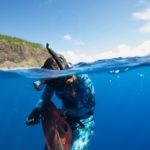
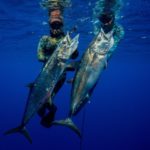
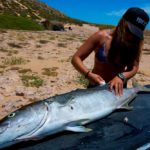
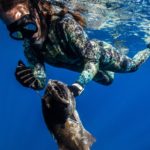
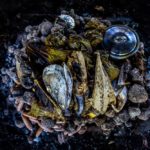

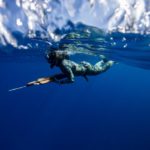

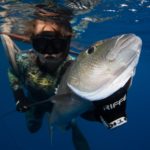



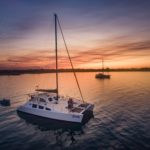
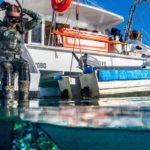
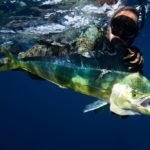

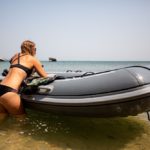
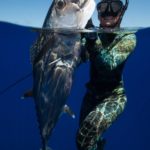
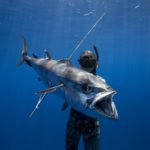

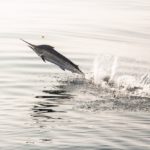
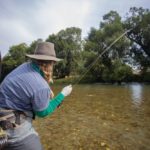

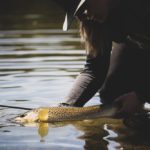
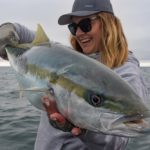
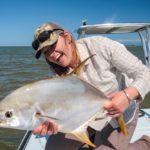
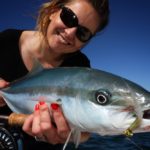
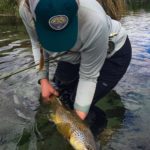
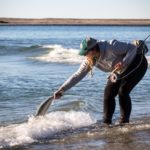
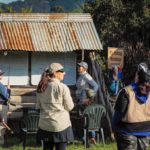

Recent Comments